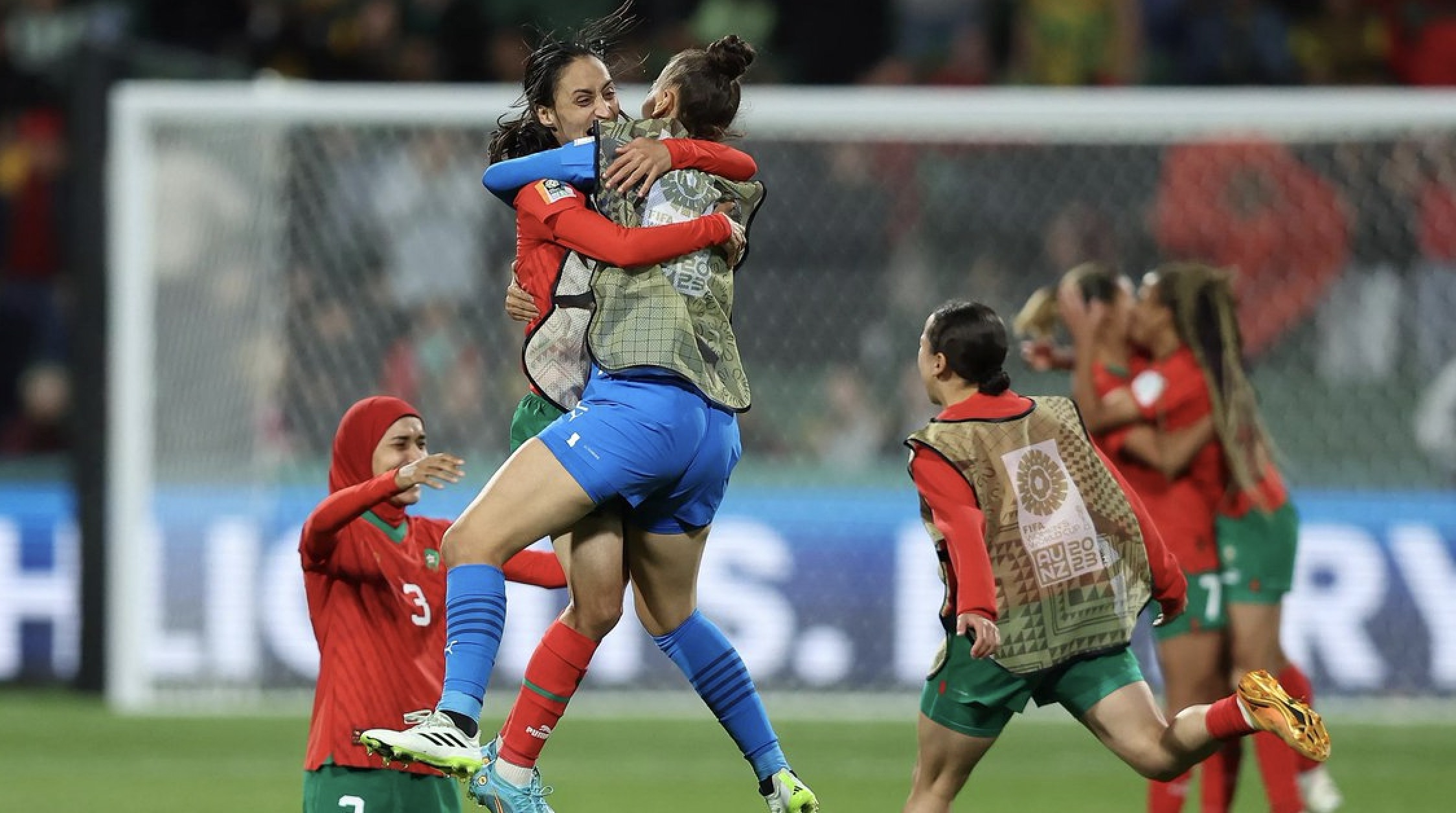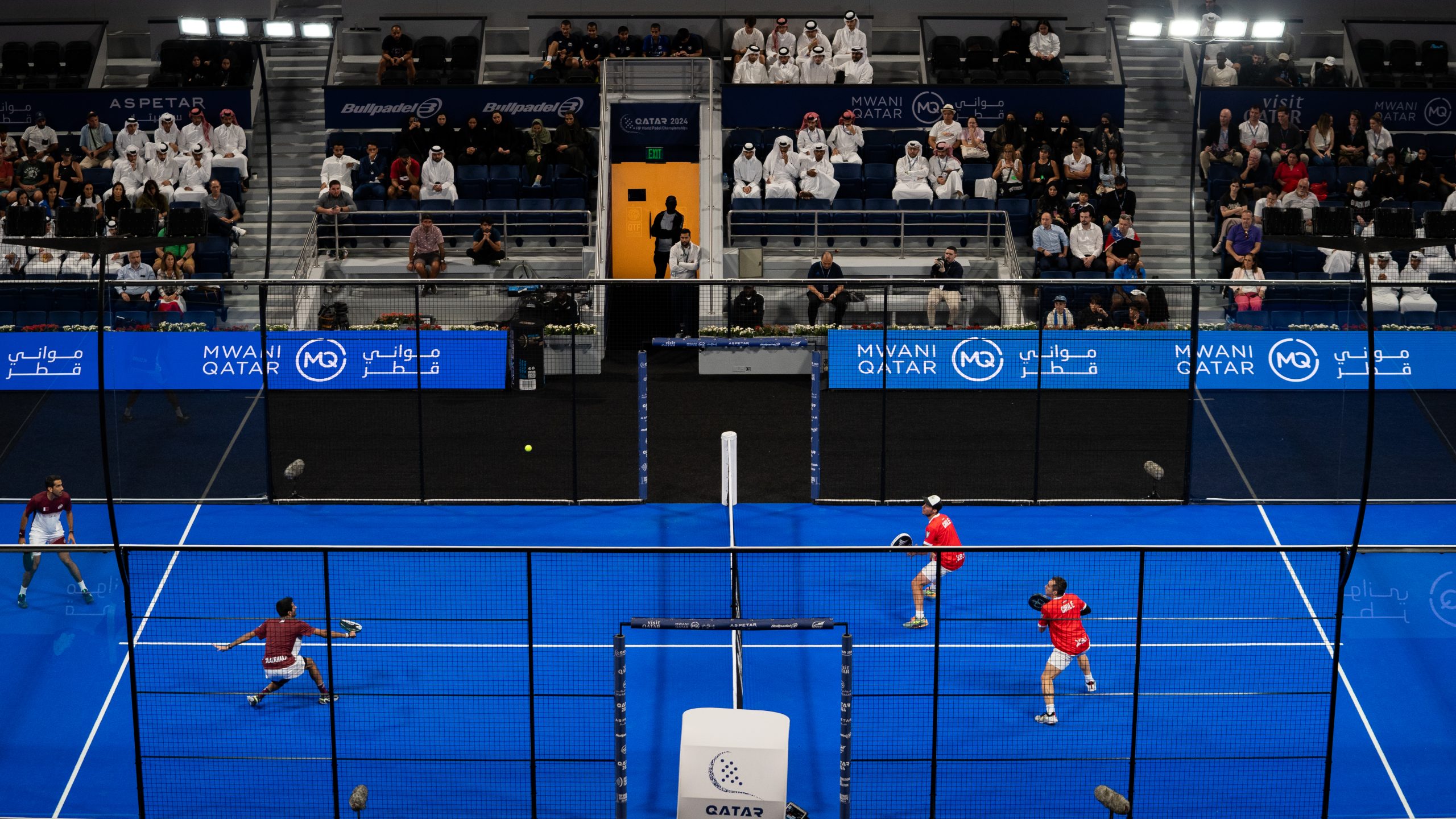For athletes in Qatar, the tournament’s exposure is inspiring women footballers and creating initiatives which increase investment in local women’s football.
This year’s FIFA 2023 Women’s World Cup has transcended the pitches of Australia and New Zealand and into the spirits of young athletes in Qatar.
Outside the thrilling matches and nail-biting moments that have captured viewership records worldwide, several feats have been accomplished to address gender and religious equality on the field.
At 16 years old, South Korean forward Casey Phair etched her name in the World Cup books by becoming the youngest player ever to participate in the tournament, illustrating to countless rising athletes that age is just a number.
Morocco’s Nouhaila Benzina made history for the Muslim world by becoming the first player to wear a hijab at a World Cup. A noteworthy accomplishment since Muslim footballers were not allowed to compete in hijabs after FIFA’s ban in 2007 due to what they described as ‘safety concerns’ after the initial justification of ‘religious symbolism’ was too difficult to enforce, given the number of tattoos and celebrations by male footballers that would have had to be enforced.
Eventually overturned in 2014, the prohibition on hijabs by the governing body intruded on the rights and progress of various Muslim women teams.
In 2011, Iran was prevented from playing an Olympic qualifying match against Jordan because of their hijabs; the athletes left the pitch heartbroken as their dreams were ruined by the purported ‘health and safety’ policy.
Now, the video game FIFA 23 has updated the player model for Morocco’s defender Benzina to be wearing a hijab, after her iconic debut in the Women’s World Cup this year.
With the gradual transformation of the game, footballers like Dana Hayek, a former player on the Qatar national women’s team, have claimed the changes to be “a remarkable and positive development.”
“The shift towards increased exposure for women’s football is a remarkable and positive development. For decades, football has predominantly been associated with male players. Their tournaments, leagues and matches have received far more attention and resources compared to women’s football,” Hayek told Doha News.
Growing up mainly watching male football teams, Hayek said the recent heightened effort in casting the spotlight on female-led tournaments is a “significant step towards breaking this cycle of underrepresentation.”
“This lack of visibility created a cycle where the underrepresentation of women’s football led to limited opportunities, funding, and recognition for female players. However, the growing prominence of women’s football is a significant step towards breaking this cycle,” Hayek remarked.
“As a footballer myself, it’s heartening to witness these changes, it signifies progress towards a more inclusive and balanced world of sports,” the Arab footballer added.
Breaking viewership records
The 2023 FIFA Women’s World Cup is expected to shatter viewership records for women’s football, hoping to attract 2 billion watchers worldwide.
During the 2019 Women’s World Cup, the official broadcast coverage pulled in a giant 1.12 billion viewers, a substantial leap from the average of 8.39 million in 2015.
This year’s push to achieve a viewership of 2 billion viewers worldwide comes after FIFA announced a deal with the European Broadcasting Union (EBU) to televise the 2023 tournament.
During the Qatar World Cup, FIFA’s President Gianni Infantino threatened a blackout for the Women’s World Cup when global broadcasters did not place suitable offers to media rights for the tournament.
“The offers from broadcasters, mainly in the ‘Big 5’ European countries, are still very disappointing and simply not acceptable based on four criteria,” the FIFA chief said at a panel discussion in late 2022.
Adding that, “broadcasters pay $100 to 200 million for the men’s FIFA World Cup, but they offer only $1 to 10 million for the FIFA Women’s World Cup.”
The tournament would eventually be televised by ITV and BBC in Britain, ARD, and ZDF in Germany, France Televisions, RAI (Italy), and RTVE (Spain), meaning all 64 matches have been shown free to air.
“FIFA is delighted to widen the deal with the European Broadcasting Union for the transmission of the upcoming Women’s World Cup to include the five major markets within their existing networks, namely France, Germany, Italy, Spain and the United Kingdom, as well as Ukraine, thus ensuring maximum exposure for the tournament,” FIFA’s president said after the agreement was struck.
For athletes like Qatar’s Hayek, the exposure inspires women footballers and creates initiatives to increase investment in local women’s football.
“Aspiring young women in Qatar and the region are witnessing firsthand how the Women’s World Cup is reshaping perceptions of women’s roles in sports and society,” Hayek told Doha News.
“It’s fostering a sense of empowerment, self-belief and unity among them. This confidence translates into a willingness to challenge traditional norms, pursue their dreams and assert their presence,” the Qatari athlete explained.
Hayek further implied that the visibility brought forth by the Women’s World Cup can help spotlight more attention on women football teams in Qatar.
“The increased media coverage, attention, and interest in women’s football have been influential in driving its development and growth. Furthermore, the success and popularity of the Women’s World Cup have spurred investments in the sport, an area that was lacking for the women’s football team in Qatar,” the former national player stated.
“Witnessing the positive effects of the Women’s World Cup is truly inspiring, as it serves as a motivating force for players like us, encouraging us to strive for a comparable level of skill and achievement.”
Inspiration in Qatar
Similar to Hayek, local footballers in Qatar have also spoken about the Women’s World Cup being a ‘weapon against gender stereotypes.’
A striker in the country’s league who cannot be named told Doha News that, “It is a weapon against gender stereotypes. It challenges the outdated belief that football is a ‘man’s game’.”
“When young girls watch us play, they see strength, agility, strategy and passion. It empowers them, showing them that they, too, can be strong, agile, and passionate. More than anything, it encourages them to break free from societal norms, to chase their passion, and to know that the football pitch is just as much theirs as it is anyone else’s,” the athlete said, adding that, “One look at the women’s team here, and you can see it. They challenge so much, and some put so much on the line just to play the game.”
Qatar’s women team has not played an official game or held consistent practice for several years but remains a member of the Qatar Football Association (QFA).
Not registered on the FIFA rankings, the women’s side status remains largely inactive.
Still, it has been reported that the QFA is working on launching the team into an active side that competes in leagues and competitions.
Organisations like the QFA don’t have to look further on a basis to activate the team as the women footballers in the country have clearly illustrated a want in on the action.







